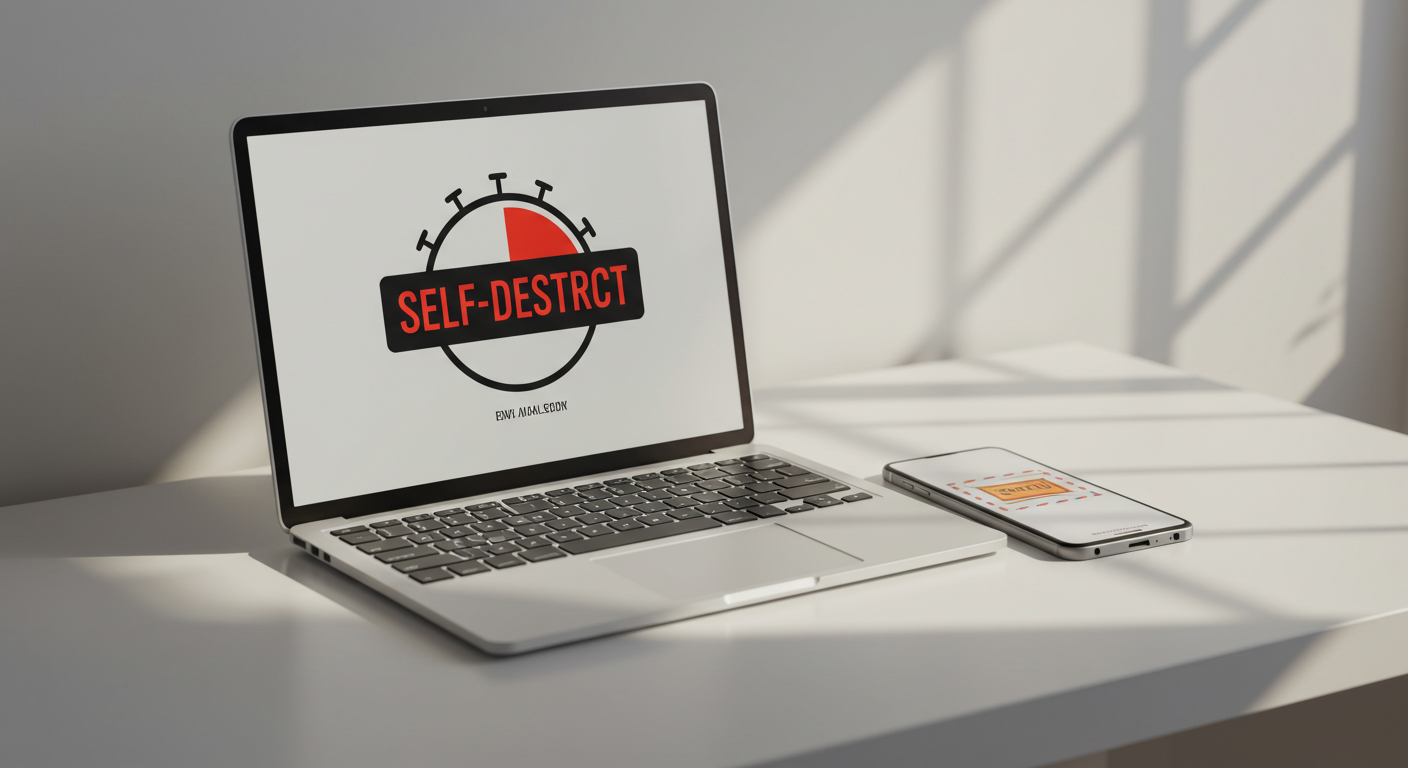One-Time Links vs. Encrypted Email: What’s Safer in 2025?

One-Time Links vs. Encrypted Email: What’s Safer in 2025?
The real problem: permanent copies everywhere
Whenever you share a secret, the biggest risk isn’t just interception—it’s persistence. Emails are archived, forwarded, synced, and backed up. Chats live on multiple devices. Years later, a single compromised mailbox or cloud backup can expose everything.
What encrypted email solves—and what it doesn’t
Encrypted email (PGP or S/MIME) protects message content in transit and at rest inside compatible mail clients. That’s great for confidentiality and integrity. But it won’t magically remove all copies or metadata trails.
- Pros: Strong content protection, signatures for authenticity, fits existing email workflows.
- Cons: Key management is hard for non-experts; recipients may store decrypted copies; messages can be forwarded; subject lines and some headers still reveal context.
- Human factor: If the recipient copies the secret into notes/screenshots, encryption doesn’t prevent later leaks.
What one-time links solve—and where they fall short
One-time links show the secret once and then destroy it. This dramatically reduces long-term exposure and email/chat archives.
- Pros: Single-view access, short expiry windows, minimal data residue, easy for recipients.
- Cons: Links can be intercepted if shared carelessly; screenshots are still possible; trust shifts to the note service and its implementation.
- Mitigations: Add an access code shared over a different channel, verify identity out-of-band, and keep expiry tight.
Threat models: choose by goal, not by trend
Pick the tool that matches your risk:
- Long-term sensitive correspondence: Encrypted email shines when you need a durable, auditable record and both sides can handle keys.
- Single secret, short lifespan (e.g., a password): One-time links minimize archives and cleanup hassle.
- High social-engineering risk: One-time links + out-of-band verification reduce damage from misaddressed emails or impostors.
Best uses for each approach
- Encrypted email (PGP/S/MIME): Legal/contract revisions, recurring partnerships, long-lived threads that must be retained by policy.
- One-time links: Passwords, API keys, recovery codes, private URLs, temporary credentials, confidential notes that should not be archived.
The hybrid that works in real life (step by step)
Combine the strengths of both approaches to reduce risk without blocking your workflow.
- Step 1: Put the secret in a single-view, self-destructing note with a short expiry (24–72 hours).
- Step 2: Add an access code the recipient must enter.
- Step 3: Share the link via your normal channel (email/chat).
- Step 4: Share the access code via a different channel (quick call or SMS) and verify identity.
- Step 5: After first login, rotate credentials for highly sensitive accounts and enable MFA.
- Step 6: Store the long-term copy in a password manager, not in email threads.
Common mistakes (and how to avoid them)
- Putting the access code in the same message as the link: Split channels.
- No expiry: Always set a short window to reduce the attack surface.
- Skipping verification: A 30-second call prevents costly misdelivery.
- Keeping secrets in email archives: Use one-time links for delivery; managers for storage.
Quick checklist
- Decide if you need a record (encrypted email) or ephemeral delivery (one-time link).
- For one-time links: single-view + short expiry + separate access code.
- Verify recipient identity out-of-band before revealing high-impact secrets.
- Store the final secret in a password manager; enable MFA on the account.
FAQ
Is encrypted email “enough” for sending passwords?
It protects content in transit, but the message still lives in archives. For credentials, one-time links reduce long-term exposure.
Can someone screenshot a one-time note?
Yes. Treat viewing as a trigger to rotate or add MFA, and share only with verified recipients.
What if the link is intercepted?
Use a separate access code and short expiry. Without the code or within a tight window, the link alone is far less useful.
Related reading
New to passphrases? Start here: How to Create Strong Passphrases You’ll Actually Remember
Want a safer delivery method? Read: The Safe Way to Share Passwords in 2025 (No Email)
Bottom line
Encrypted email is great for conversations you must keep. One-time links are better for secrets you should not keep. Use each where it wins—or combine both for a practical, safer workflow.
Secure One-Time Messages - Send confidential messages that self-destruct after being read once. Your privacy is our priority. →.
🔒 Keep your home safe with ease: check out the Ring Rechargeable Quick Release Battery Pack 🔗 and never let your security camera run out of power.
🧠 Boost Your Brain Power Today
Curious about how far your brain can go? Neuro Surge is the new 2025 formula designed to enhance memory, focus, and mental clarity. Backed by science and optimized for performance, it's one of the top-rated brain supplements this year.
🔍 Learn More About Neuro Surge📜 Original Content Notice: This article was originally published on 🔒OneTimeRead. All rights reserved.
Reproducing or republishing this content without written permission is strictly prohibited. Our team combines historical research, ancient texts, and AI analysis to bring you unique insights into hidden history and mysterious knowledge from around the world.